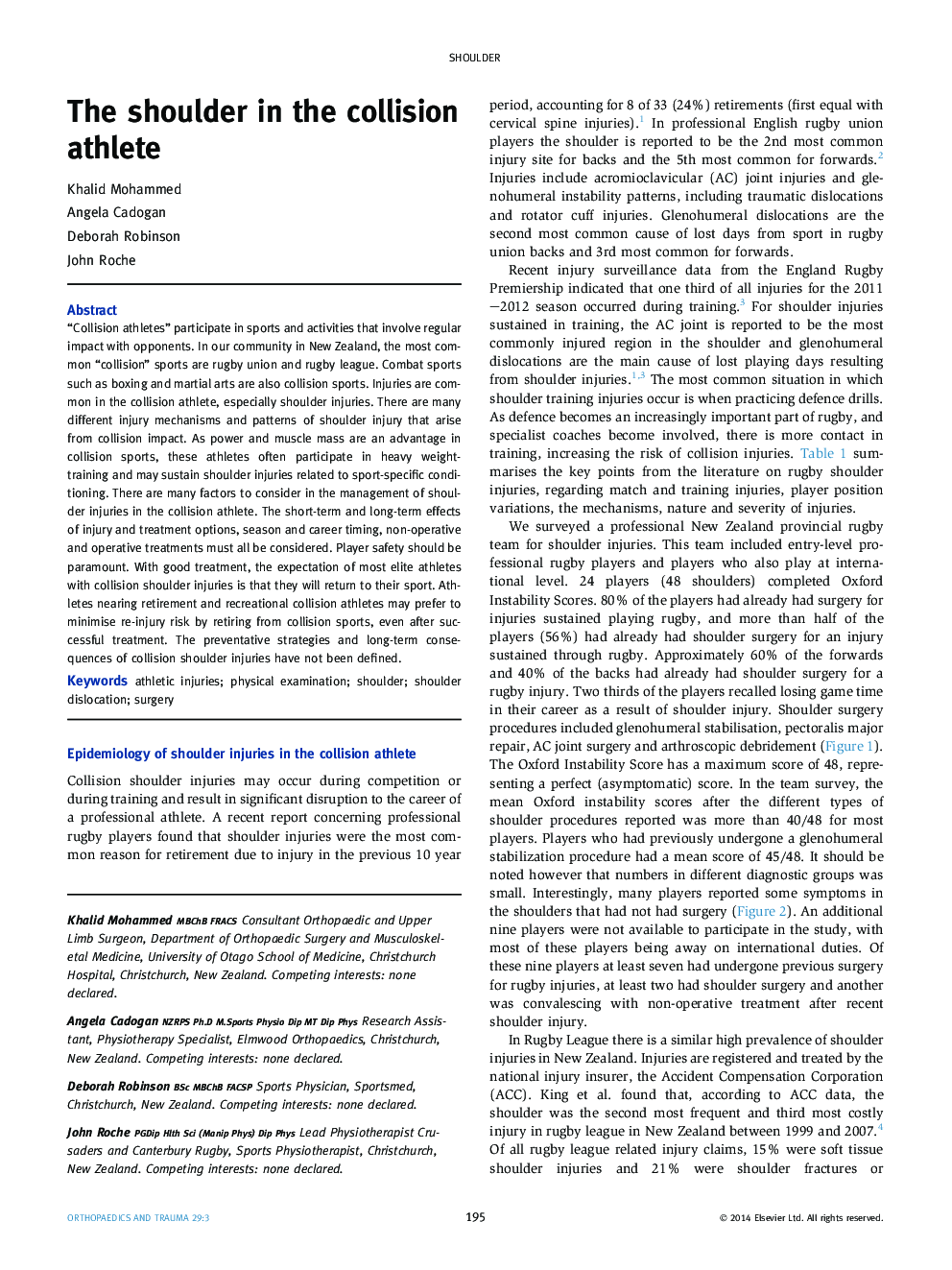| Article ID | Journal | Published Year | Pages | File Type |
|---|---|---|---|---|
| 4080190 | Orthopaedics and Trauma | 2015 | 11 Pages |
“Collision athletes” participate in sports and activities that involve regular impact with opponents. In our community in New Zealand, the most common “collision” sports are rugby union and rugby league. Combat sports such as boxing and martial arts are also collision sports. Injuries are common in the collision athlete, especially shoulder injuries. There are many different injury mechanisms and patterns of shoulder injury that arise from collision impact. As power and muscle mass are an advantage in collision sports, these athletes often participate in heavy weight-training and may sustain shoulder injuries related to sport-specific conditioning. There are many factors to consider in the management of shoulder injuries in the collision athlete. The short-term and long-term effects of injury and treatment options, season and career timing, non-operative and operative treatments must all be considered. Player safety should be paramount. With good treatment, the expectation of most elite athletes with collision shoulder injuries is that they will return to their sport. Athletes nearing retirement and recreational collision athletes may prefer to minimise re-injury risk by retiring from collision sports, even after successful treatment. The preventative strategies and long-term consequences of collision shoulder injuries have not been defined.
